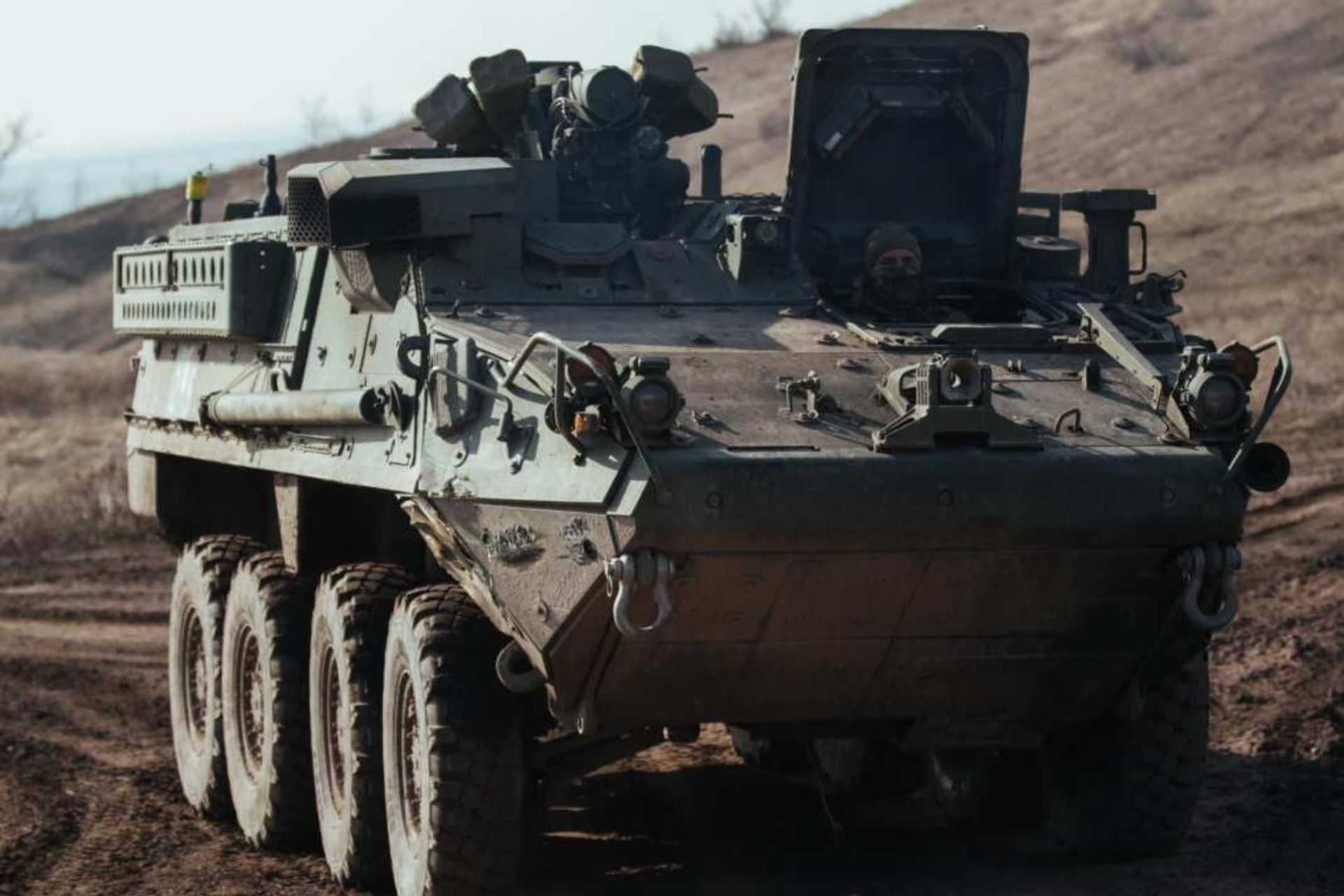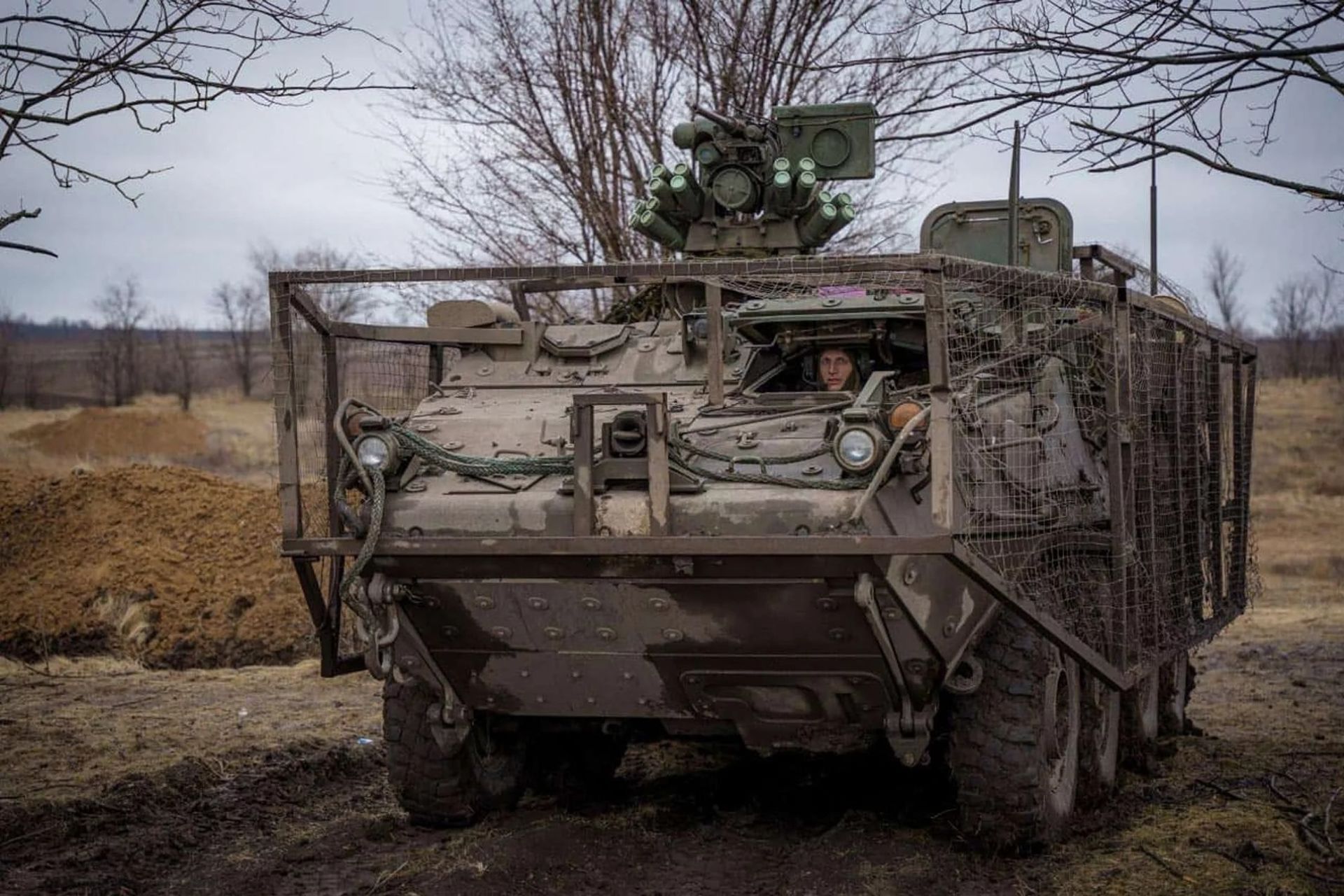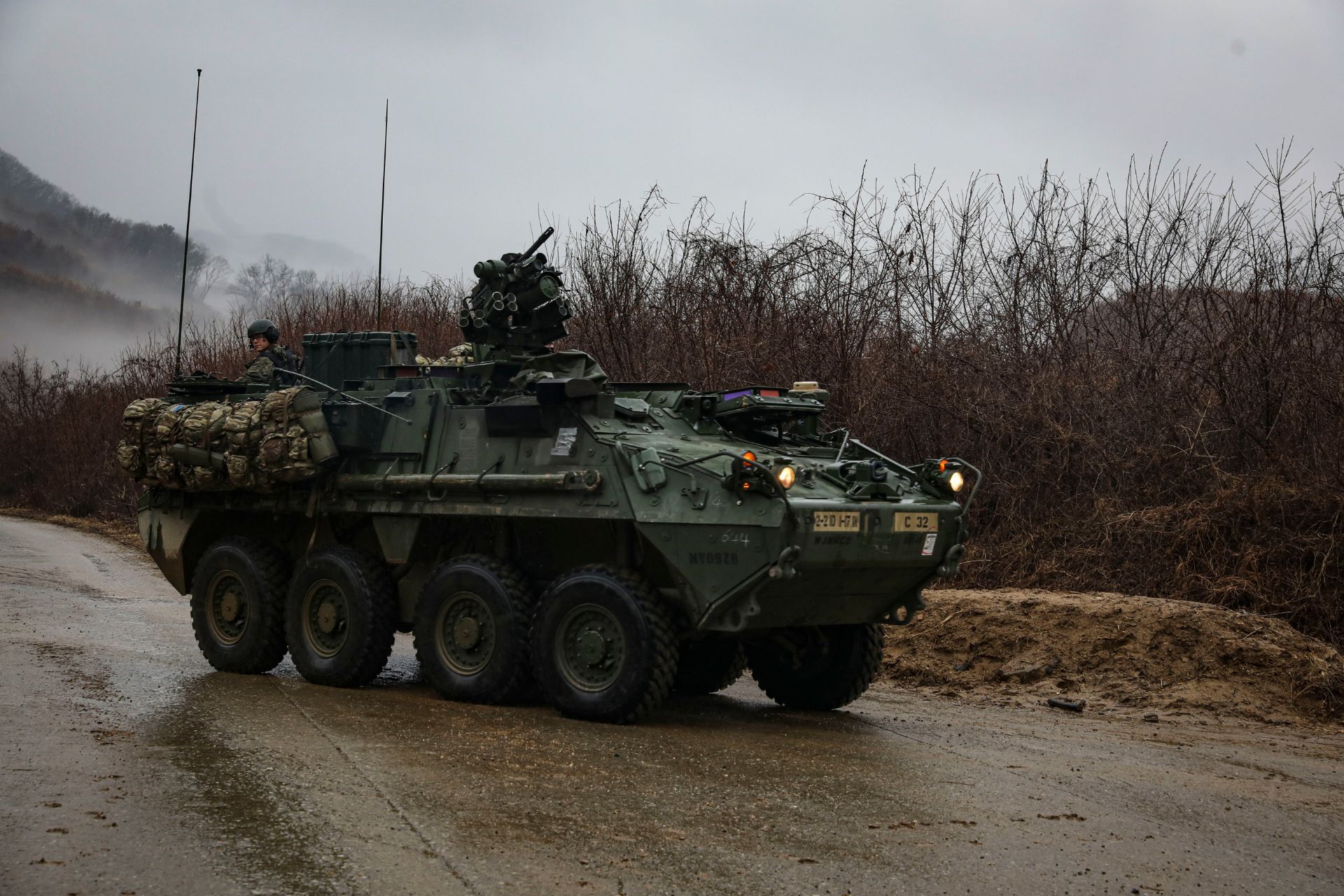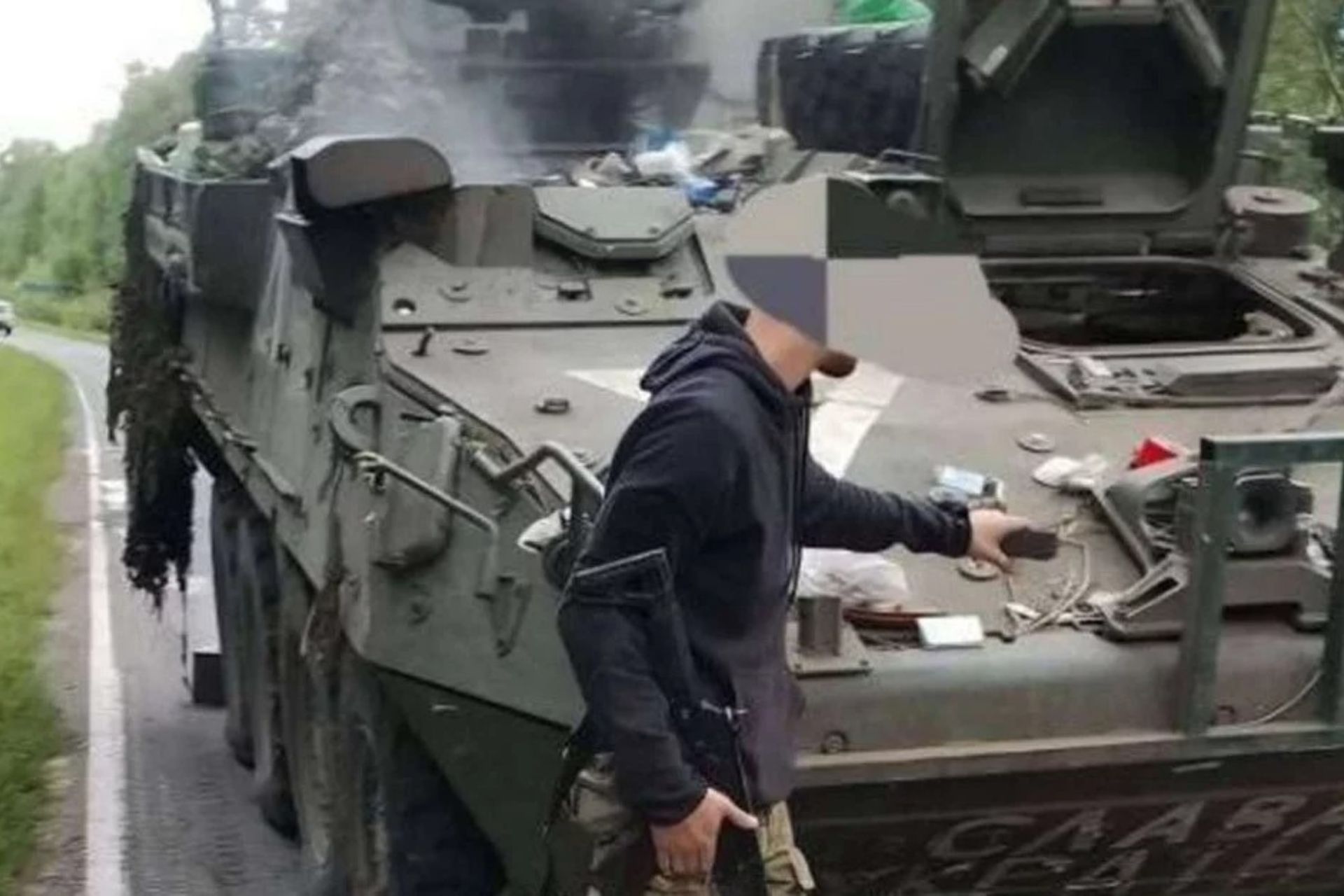Breaking News
FOCUS: What Made M1126 Stryker APC Crucial for Ukrainian Forces in Kursk Region.
The Kursk region has become a critical battlefield in the ongoing conflict between Russia and Ukraine, with Ukrainian forces launching a significant cross-border offensive in early August 2024. This operation, one of the largest incursions into Russian territory, aimed to disrupt Russian defenses and gain strategic advantages. Ukrainian forces, particularly the 82nd Air Assault Brigade, effectively utilized U.S.-supplied M1126 Stryker Armored Personnel Carriers (APCs) to enhance their combat capabilities. These vehicles have proven essential in achieving Ukrainian military objectives in the region.
Follow Army Recognition on Google News at this link

The Stryker armored personnel carrier of the 80th Air Assault Brigade (Picture source: Ukrainian MoD)
The Strykers provided mobility and protection to Ukrainian infantry, facilitating rapid and coordinated assaults that contributed to significant territorial gains. However, the risks remain high, as evidenced by the Russian capture of a Stryker vehicle during this offensive. This incident highlights both the operational challenges and the crucial role these vehicles play in Ukraine's strategy.
The Situation in the Kursk Region
The offensive in the Kursk region began on August 6, 2024, marking a bold move by Ukrainian forces. This operation saw Ukrainian troops advance up to 20 kilometers into Russian territory, capturing key positions, including the strategic Sudzha gas hub. The use of Strykers and other Western-supplied vehicles, such as the German Marder, enabled Ukrainian forces to quickly breach Russian defenses and establish a foothold in the region.
Despite heavy Russian air and artillery strikes, Ukrainian forces maintained their momentum, forcing Russia to redeploy resources from other fronts. This offensive also led to the capture of numerous localities, with around 1,000 square kilometers of territory falling under Ukrainian control. The Kursk region, due to its proximity to the Russian heartland, has become a crucial front in the conflict, and the success of Ukrainian operations here could have far-reaching implications.

The Strykers used by Ukrainian forces in Kursk are part of a larger supply of 189 units pledged by the United States and other NATO countries. (Picture source: 82odshbr)
The Role of M1126 Stryker APCs
The M1126 Stryker APC has been instrumental in the Kursk operation. These vehicles, part of a $2.5 billion U.S. military aid package announced in January 2023, have significantly enhanced the mobility and tactical flexibility of Ukrainian forces. The package included 90 Stryker APCs and 20 Light Weight Mine Rollers (LWMR), which have been critical in navigating heavily mined battlefields.
The Stryker's design, based on the Canadian LAV III and the Swiss Mowag Piranha, provides robust armored protection and a variety of configurations to suit different combat roles. The M1126 variant, widely used by Ukraine, can transport up to 9 infantry soldiers and is equipped with a remote-operated M151 Protector turret. This turret can mount either a 12.7mm M2 Browning machine gun or a 40mm Mk.19 automatic grenade launcher, offering substantial firepower in support of infantry operations.
Additionally, the Stryker's off-road capability and high speed (up to 100 km/h) allow for rapid redeployment of forces, which is essential in maintaining the element of surprise and achieving a "schwerpunkt" effect—a concentrated attack that breaks through enemy lines. The vehicle's thermal sensors have given Ukrainian commanders a critical edge, enabling them to detect Russian forces beyond their detection capabilities, and facilitating precision strikes with artillery and ATACMS missiles.

An M1126 Stryker Combat Vehicle assigned to 1st Battalion during a squad training exercise on January 13, 2023 at Twin Bridges Training Area in South Korea during Korea Rotational Force 12 (Picture source: US DoD)
How the Stryker's Capabilities Benefited Ukrainian Forces in Kursk
According to defense analyst Nicholas Drummond, the Stryker's combination of speed, protection, and firepower has been pivotal in Ukraine's Kursk operation. The vehicle's ability to quickly and securely deploy infantry on the battlefield allowed Ukrainian forces to execute surprise attacks and overwhelm Russian defenses. The Stryker's thermal imaging capabilities further enhanced situational awareness, enabling Ukrainian commanders to coordinate artillery strikes effectively and sustain their offensive momentum.
Moreover, the Stryker's resilience in the face of Russian counterattacks highlighted its value in sustaining prolonged operations. Its advanced armor, including additional bolt-on ceramic plates, protected Ukrainian troops from small arms fire, artillery fragments, and improvised explosive devices (IEDs), making it a reliable platform in contested environments.

The captured M1126 Stryker was subsequently displayed flying the flag of Russia's 810th Independent Marine Infantry Brigade. (Picture source: Telegram/War Webm)
Despite the Stryker's effectiveness, Ukrainian forces faced setbacks during the Kursk offensive. On August 14, 2024, Russian forces captured a U.S.-made M1126 Stryker APC, marking a significant propaganda victory for Moscow. The vehicle, part of the 82nd Air Assault Brigade, was ambushed and subsequently displayed by the Russian 810th Independent Marine Infantry Brigade.
This capture underscores the vulnerabilities that persist even with advanced Western military equipment. While the Strykers have provided a tactical edge, the incident highlights the ongoing risks faced by Ukrainian forces as they continue to push into Russian territory.
The M1126 Stryker APC has proven to be a critical asset for Ukrainian forces in the Kursk region, offering a combination of mobility, protection, and firepower that has been essential in their recent successes. While challenges remain, particularly with capturing one of these vehicles by Russian forces, the Stryker's role in Ukraine's broader military strategy cannot be understated. As the conflict continues, the effectiveness of the Stryker in such operations will likely influence future military aid decisions and operational tactics in the region.


























